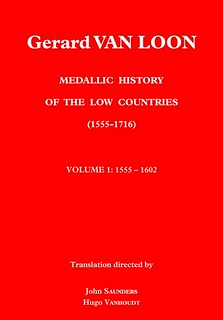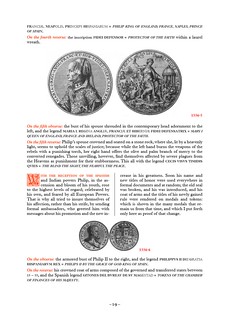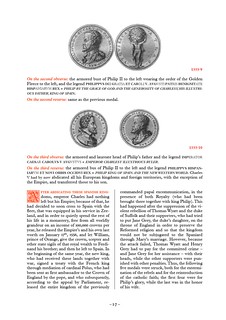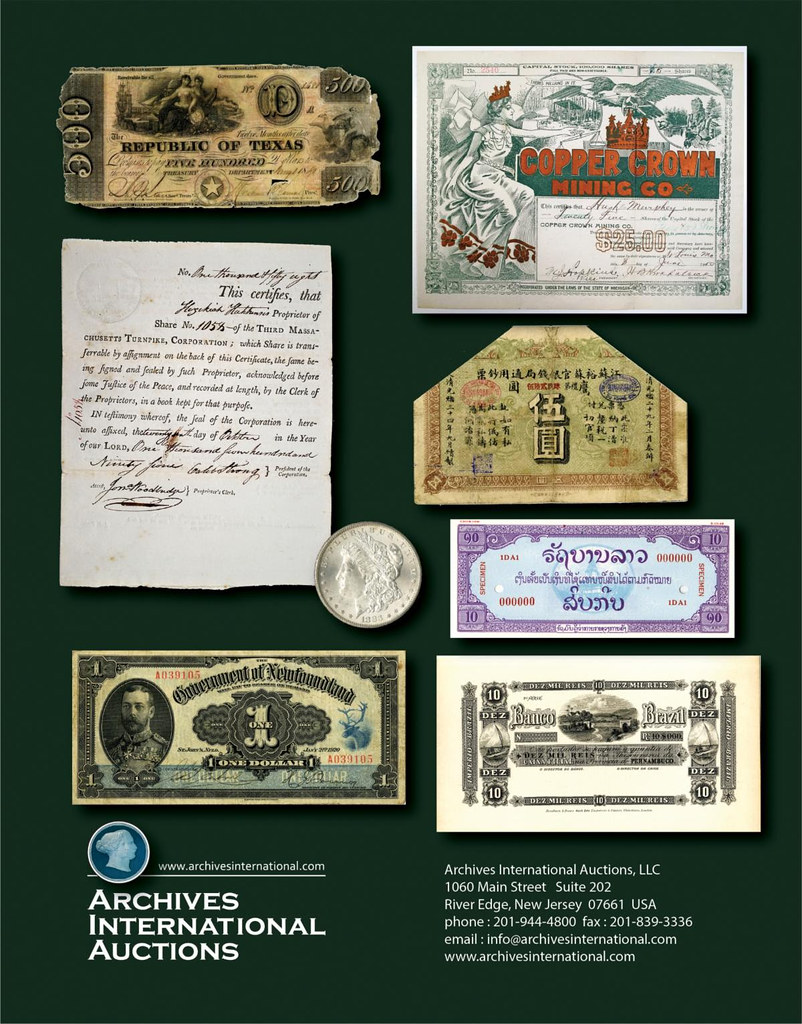
PREV ARTICLE
NEXT ARTICLE
FULL ISSUE
PREV FULL ISSUE
BOOK REVIEW: VAN LOON ENGLISH TRANSLATIONChris McDowell submitted this review of the new English translation of Van Loon's Medallic History of the Low Countries (1555-1716). Thank you! I'd been hoping someone would give us their thoughts. -Editor
Review of John Saunders and Hugo Vanhoudt's English translation of
By Christopher R. McDowell, Esq.
I am preparing a work based on C. Wyllys Betts's book on American medals. In doing so, I quickly realized that I needed a copy of Van Loon's four-volume masterpiece, which Betts relied heavily upon for many of the descriptions of the early medals in his book. After months of searching, I was able to obtain a lovely set from David Fanning, which, by the way, cost me a few thousand dollars. Although Van Loon's original work was published in Dutch, a later 1732 edition was made available in French, neither of which I speak or read. I do, however, read German, a language that, in my hubris, I thought was similar enough to Dutch to allow me to bumble through Van Loon's book. Much to my dismay, Dutch is just close enough to German to make for ridiculous translations. This failed experiment led me to purchase an instrument of torture commonly known as a Dutch/English dictionary, which led to the further revelation that Van Loon wrote in an archaic form of Dutch that, while close to modern Dutch, was not precisely the same.
I knew the key to understanding some Betts medals lay hidden within Van Loon's hieroglyphs. Still, the Rosetta Stone of a perfect translation eluded me—I would spend days translating two pages, only to have portions look like gibberish. As my frustration mounted towards the end of 2020, I even contemplated the heresy of purchasing the French edition and trying my hand at translating it. In desperation, I cried out to the numismatic Gods, As if in answer to my prayer, in late December, I saw an article in The E-Sylum to pre-subscribe to an English translation of Van Loon! I immediately placed my order. Three weeks ago, I received an email stating the translation was ready to be shipped and asking if I still wanted my copy. What an absurd question! Of course I did. The following week I received another email with the price. My money sent; I waited another week for the four-volume set to arrive. When it finally came, I opened the box and immediately took its contents to my library for solitary contemplation. Could this translation ever equal my overhyped anticipation? Ja! Het is geweldig! First and foremost, this is a translation of the original Dutch version and not the later French translation. In my mind, this is the only acceptable course. To do otherwise would be like translating the Bible from French to English rather than an older Greek version—the best, most reliable translation is that which is closest to the original. I am sure it would have been much easier to translate the French version to English rather than the Old-Dutch of Van Loon's original; that Messrs. Saunders and Vanhoudt eschewed the easy path in search of the best translation speaks to the care and attention to detail with which they approached this important project. This new book contains an exact translation of the original, i.e., if Van Loon made errors, they have been replicated in English in this new work. The temptation to amend Van Loon's words—to correct his errors—must have been overwhelming in many instances; however, the authors have wisely suppressed the urge to amend the text. Our knowledge of many of the medals appearing in Van Loon has advanced in the last three hundred years. Editing or correcting the text would have been a Quixotic, if not impossible, task, which, as we shall see, opens up the work to criticism. I prefer my Van Loon as in the original, warts and all, and that is how he is presented here, word for word, as the Dutch master put them down three centuries ago.
One of the great things about the original Dutch version is the hundreds of intricately detailed steel-plate etchings of medals found in its pages—they are true works of art. I worried, While the authors use their new asterisk system sparingly, I would have recommended against this subtle form of editing. The truth be known, there are many medals depicted in Van Loon that were not produced on the dates indicated. To mark some, but not all, with an asterisk leaves the impression that the unmarked medals were created in the year noted, which is frequently not the case. Additionally, if the authors wished to take on the task of marking some medals with an asterisk, they should have followed up with an explanation of the correct date. This very minor comment is the only criticism I have with the translation. The four-volume set cost me $228, which is a fantastic value. Quite frankly, based on the expense and time of translating Van Loon to English and the high quality of the binding and color plates, I cannot imagine how the authors are making any money off this venture. And while no one should purchase this four-volume set solely as an investment, I would venture a guess that it will appreciate in value over time. I asked John Saunders if he intended to translate the ten-volume Van Loon supplement into English (Van Loon did not write these volumes, rather they were prepared after his death to incorporate medals left out of the original work). Mr. Saunders indicated that he was working on translating the ten-volume set, which will be an additional boon to American collectors. In summary, anyone interested in medals should purchase this translation before it sells out. The work involved in translating Van Loon into English is incredible, which is why I suspect it has never been attempted before now. This new four-volume set brings Van Loon's work alive. For the first time, I feel that I can genuinely appreciate what Van Loon was trying to accomplish and have gained far greater insight into several early Betts medals. The full scope and grandeur of Van Loon's work is now available to the English-speaking collecting community thanks to Saunders and Vanhoudt—we all owe them a debt of gratitude. I could not be more pleased with this four-volume set.
To read the earlier E-Sylum article, see:
Wayne Homren, Editor The Numismatic Bibliomania Society is a non-profit organization promoting numismatic literature. See our web site at coinbooks.org. To submit items for publication in The E-Sylum, write to the Editor at this address: whomren@gmail.com To subscribe go to: https://my.binhost.com/lists/listinfo/esylum All Rights Reserved. NBS Home Page Contact the NBS webmaster 
|



